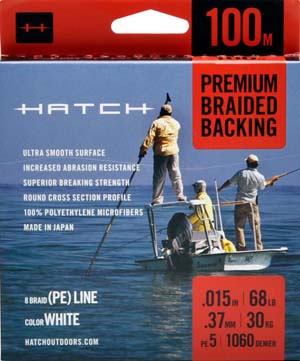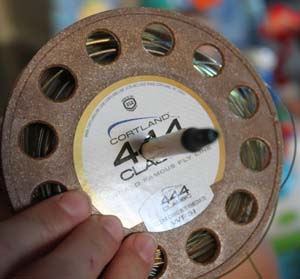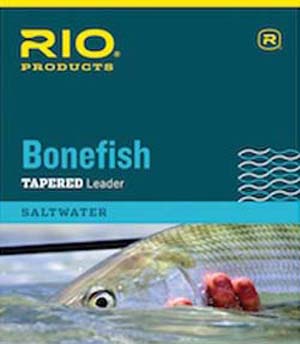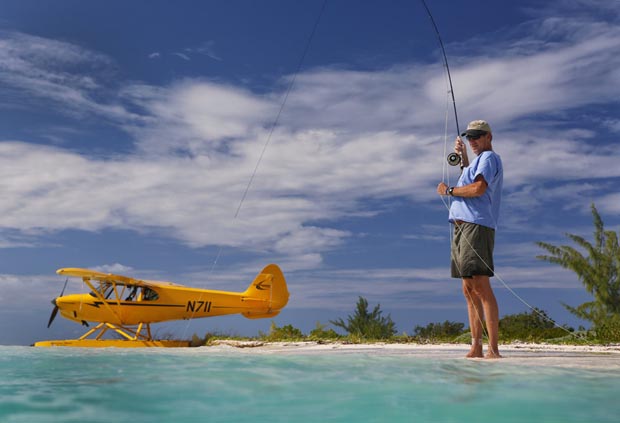Backing and more
[dropcap]D[/dropcap]acron backing has been with us for long time. That thin line of material attached to both the back end of your fly line and reel arbor is the last line of defense against a “smoker.”
It’s made out of a tough polyester called polyethylene terephthalate (PETE). Gel-spun, your other backing option, is made from another polymer called high-modulus polyethylene (HMPE). It has zero stretch.
There is an alternative
It’s a Hatch Outdoors product called Hatch Premium Braided Backing. It’s diameter is .15” (roughly the diameter of 20-pound Dacron), advertised at 68-pound test. It’s other claim: One size fits all – a single diameter line can be used effectively in all fly-fishing applications – fresh or saltwater, trout to big game fish.
Insurance
 Backing materials act as your insurance policy against break-offs from running saltwater fish like tarpon, giant trevally, jacks, sharks, and their fresh water brethren like steelhead or salmons (chinook and Atlantic). Or for that matter, any fish that can take you into the backing.
Backing materials act as your insurance policy against break-offs from running saltwater fish like tarpon, giant trevally, jacks, sharks, and their fresh water brethren like steelhead or salmons (chinook and Atlantic). Or for that matter, any fish that can take you into the backing.
The payoff off having backing is when your catch runs beyond the length of your fly line, which is generally around 100-feet. That is, of course, if your knots hold.
The most universal choices (fly shops) for backing are 20- and 30-pound test Dacron. Greater diameter/tests are available for big game animals in higher test lines in both Dacron and gel-spun.
About gel-spun
Gel-spun has inherent advantages: Allows up to 75% more capacity versus Dacron, retains 100% strength while wet, extremely high abrasion resistance, high visibility, low coefficient of friction (COF) and it’s impervious to UV rays, gas, salt and other elements. It’s big advantage is less water drag. A powerful incentive for big game anglers. The last advantage is that gel-spun gives a smaller, less expensive reel the advantages of an expensive, large arbor reel due to faster take-up of line.
Its negatives are that it requires being “tightly” wrapped on the arbor. Old model fly reels can warp from that tight winding requirement, it is not knot friendly, if suddenly jerked it can break-off, and its connection to the fly line will wear through so it needs to be checked often. Also, the fibers can fracture at the connection point when constantly rubbed against the tip-top guide, ports of the reel or any ‘edge’.
Making it work
For trout, you’re generally stuck with 20-pound test Daron, but if you want to buy reel space, 35-pound gel-spun is your answer. However, if your fishing for anything bigger than an average trout, use 50-pound gel-spun. NOTE: A 20-pound test Dacron line is the same thickness as 80-pound test gel-spun so a 35-pound test gel-spun will afford lots more spool space, or more backing, which ever you prefer. Your alternative connection, backing to fly line on trout lines, is a Double Surgeons Loop Knot – it’s easy to tie and strong.
Tying things together
The two preferred and easiest to knots tie, attaching backing to the reel arbor, are the Arbor Knot and the Duncan Loop (Uni-Knot).
A loop to loop connection, connecting backing to fly line, will wear less on the fly line, especially for gel-spun.
 The preferred connection, backing to fly line, would be loop to loop. A Bimini or spider hitch tied into the backing with its loop joined to the factory welded loop in the fly line produces the best of connections. If no factory fly line loop, tie a single or double nail knot loop in the fly line to connect to the Bimini or spider, which holds well when using Dacron. With a nail knot loop, the wraps have-to line up evenly. Pay attention. Also, a little clear goo applied to the nail knots will assure a smooth transition should a fish take you there.
The preferred connection, backing to fly line, would be loop to loop. A Bimini or spider hitch tied into the backing with its loop joined to the factory welded loop in the fly line produces the best of connections. If no factory fly line loop, tie a single or double nail knot loop in the fly line to connect to the Bimini or spider, which holds well when using Dacron. With a nail knot loop, the wraps have-to line up evenly. Pay attention. Also, a little clear goo applied to the nail knots will assure a smooth transition should a fish take you there.
Buyer beware
A gel-spun Nail Knot loop connection does wear on the fly line’s outer coating, and can be an issue – check that connection regularly. NOTE: Gel-spun backing can severely mangle a digit if fingering line while fighting a running fish. Newer versions of gel-spun, manufacturers claim, are not as saw-like.
Welded loops
Today, almost all fly lines have welded loops at both ends until you get to big game fly lines. Big game fly line versions don’t provide a welded loop at the leader end because of hanging-up issues at the tip-top guide of the rod – on both out-going and in-coming line. The choice for a fly line to leader butt connections are generally versions of a nail knot, or loop to loop. A 50-pound test butt to 40-pound test could be a loop connected (Perfection Loop) followed by knotted connections all the way to the fly.
 Knotless anyone?
Knotless anyone?
Leaders for trouts, and even in some quarters bonefish and smaller saltwater animals, have been quickly drifting to a knotless. Today, producers have been able to control the progressive stiffness of knotless leaders, dissipating the too limp to enjoy claim (tight casting loop, big flies, and wind issues). Knotless, obviously, doesn’t involve tying lots of knots (invitations to failure), and no debris hang-ups. Yes, a purchase of knotless leaders is more expensive than tying your own knotted leaders. But for many the quick leader change-out is precious “fishing” time saved.
The almighty Bimini
With heavier weight lines/rods used for tarpon and billfish, for example, a Bimini Twist is also called for in the leader. Some disagree, believing the fly line itself has enough to temper bursts, head shakes and acrobatics. Nevertheless, big game leaders are all about progression, length, flies and bite guards. And, importantly, always think about just what is it you’re fishing for? then decide on a leader.
Knot making boils down to comfort zone. If you’ve been successful with a Spider Hitch Loop Knot, stay with it, but know that it doesn’t test as strong as a Bimini Twist.
Sources: David Olsen, managing partner of The Fly Shop of Miami, Gary Merriman, Fish Hawk, our staff and regular contributors.


